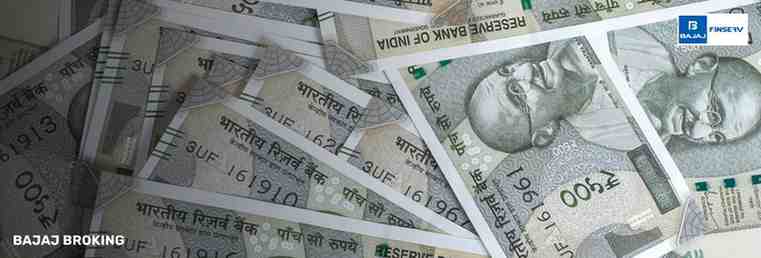When a trader places an order, the final trade price may not always match the expected one. This difference is called impact cost.
It shows how much a trade affects the stock’s price due to its size and market activity. In simple terms, impact cost reflects how smoothly you can buy or sell a stock.
When there are many buyers and sellers, trades happen quickly with little price movement.
But in less active markets, even small trades can shift prices more. Knowing this helps to understand how efficiently trades are carried out.
Understanding Impact Cost in Trading
Impact cost gives a clear picture of market liquidity. It measures the gap between a stock’s ideal price and the price you actually get while trading.
When an order is large, not every share may be traded at the same quoted price. The trade itself can move the price slightly, and that movement becomes the impact cost.
In simple terms, impact cost refers to the change in price as a result of your own trade.
A smaller difference indicates smoother trading, and a larger one indicates lower liquidity or larger gaps in prices.
How to Calculate Impact Cost?
Impact cost is calculated using the following formula:
Impact Cost = (Actual Buy/Sell Price – Ideal Price) ÷ Ideal Price × 100
Where:
Let’s look at stock ‘Y’ as an example:
Buyer
| | Seller
| |
Quantity
| Price (₹)
| Quantity
| Price (₹)
|
1,000
| 102.5
| 1,000
| 103
|
1,000
| 101.5
| 1,500
| 104
|
2,000
| 100
| 500
| 104.8
|
1,000
| 98.5
| 100
| 105
|
Example 1: Selling 3,000 Shares of Y
Ideal Sell Price = (₹103 + ₹102.5) ÷ 2 = ₹102.75
Actual Sell Price = (₹101.5×1,000 + ₹100×1,500 + ₹98.5×500) ÷ 3,000 = ₹100.63
Impact Cost = (102.75 – 100.63) ÷ 102.75 × 100 = 2.06%
Example 2: Buying 3,000 Shares of Y
Ideal Buy Price = (₹102.5 + ₹103) ÷ 2 = ₹102.75
Actual Buy Price = (₹103×1,000 + ₹104×1,500 + ₹104.8×500) ÷ 3,000 = ₹103.93
Impact Cost = (103.93 – 102.75) ÷ 102.75 × 100 = 1.15%
These examples show how even small differences in price can create a measurable impact cost. Understanding how to calculate it helps you grasp how trades behave in different market conditions.
Importance of Impact Cost in Market Liquidity
The cost of impact shows how liquid a market is. Many people trade when demand is high, so the cost is low and the trade can be completed close to the expected price.
When markets aren't very liquid, trades may have to pull from a range of price levels in the order book. This makes prices move more and raises the cost of impact.
Low availability can make a trade less likely to go through:
Price Changes: As your purchase goes through several price points, you may pay a little more or get a little less.
Execution Time: Trades can take longer to finish, putting you at risk of short-term price changes.
In short, a smaller impact cost means that the market is more stable and has more money flowing through it. It's likely that when costs are higher, the market is smaller and prices are more affected by the amount of trade.
Factors Influencing Impact Cost
To understand why trade prices change, it helps to know what shapes affect cost.
Size of Trade:
The extent to which the price changes is often based on the size of the trade. In places with little trading, big orders can push prices away from the quoted level. Sometimes, a single large order must match several smaller ones, widening the gap between the expected and actual prices.
Market Liquidity:
Liquidity shows how quickly shares can be traded. When more participants are active, trades go through smoothly near the expected price. In a thin market, even moderate orders can shift prices.
Market Depth:
The structure of market depth indicates the amount of buy and sell orders at different price levels. A deeper market can absorb more trades with less price movement. A shallow market means that prices can move quickly.
Volatility:
Volatile markets exhibit faster, more unpredictable price movements. Large trades are harder to complete without impacting the price. Calmer markets usually show smaller price differences.
Additional Read: Types of Stock Trading in India
Strategies to Minimise Impact Cost
While impact cost cannot be removed completely, it can be managed with careful execution:
Trade in Small Parts: Breaking large trades into smaller ones spreads out the buying or selling pressure. It keeps prices from going up quickly and lets you respond to changes in the market.
Use either VWAP or TWAP: The Volume Weighted Average Price (VWAP) and Time Weighted Average Price (TWAP) algorithms help spread trades out fairly. They want your trades to be in line with the average price of the market so that there are fewer sudden problems.
Place limit orders: With limit orders, traders can set the price they want. It's easier to keep an eye on trades this way, and you're less likely to buy or sell for too much. It keeps trade prices steady over time.
Use risk management tools: Tools that keep track of real-time information on volatility and liquidity make it easier to find the best times to trade. Being aware of expected price ranges makes it easier to plan deals that stay within those ranges.
Conclusion
To sum up, the impact cost is not only relevant to your trading in the market. It provides insight into how order size, volatility, and liquidity affect the final results of trades.
If the trader understands how to calculate and interpret impact cost, they have a stronger grasp of how the market actually works.
It is not about guessing the future direction of the market, but seeing the relationships that market realities have with trades.




